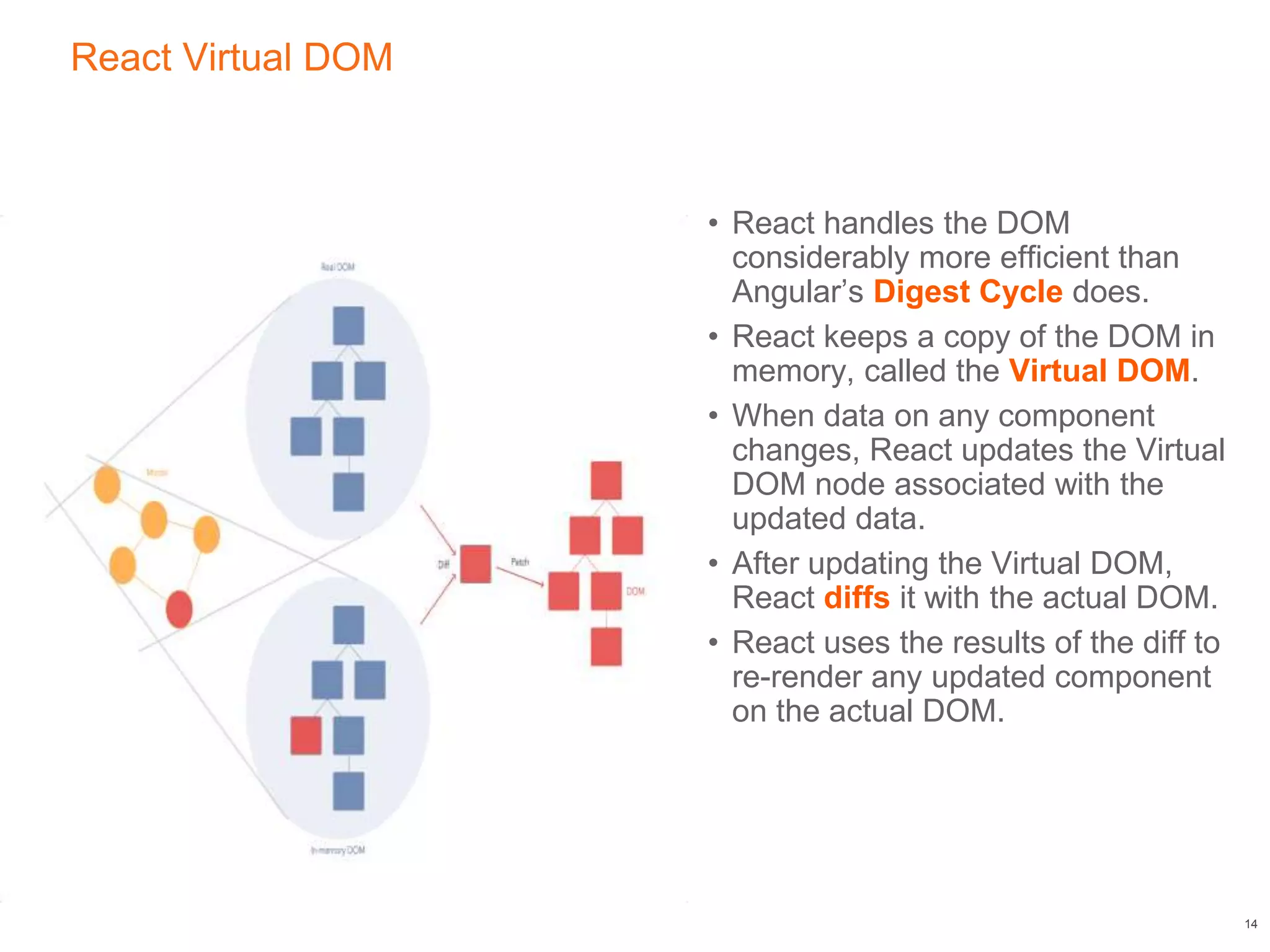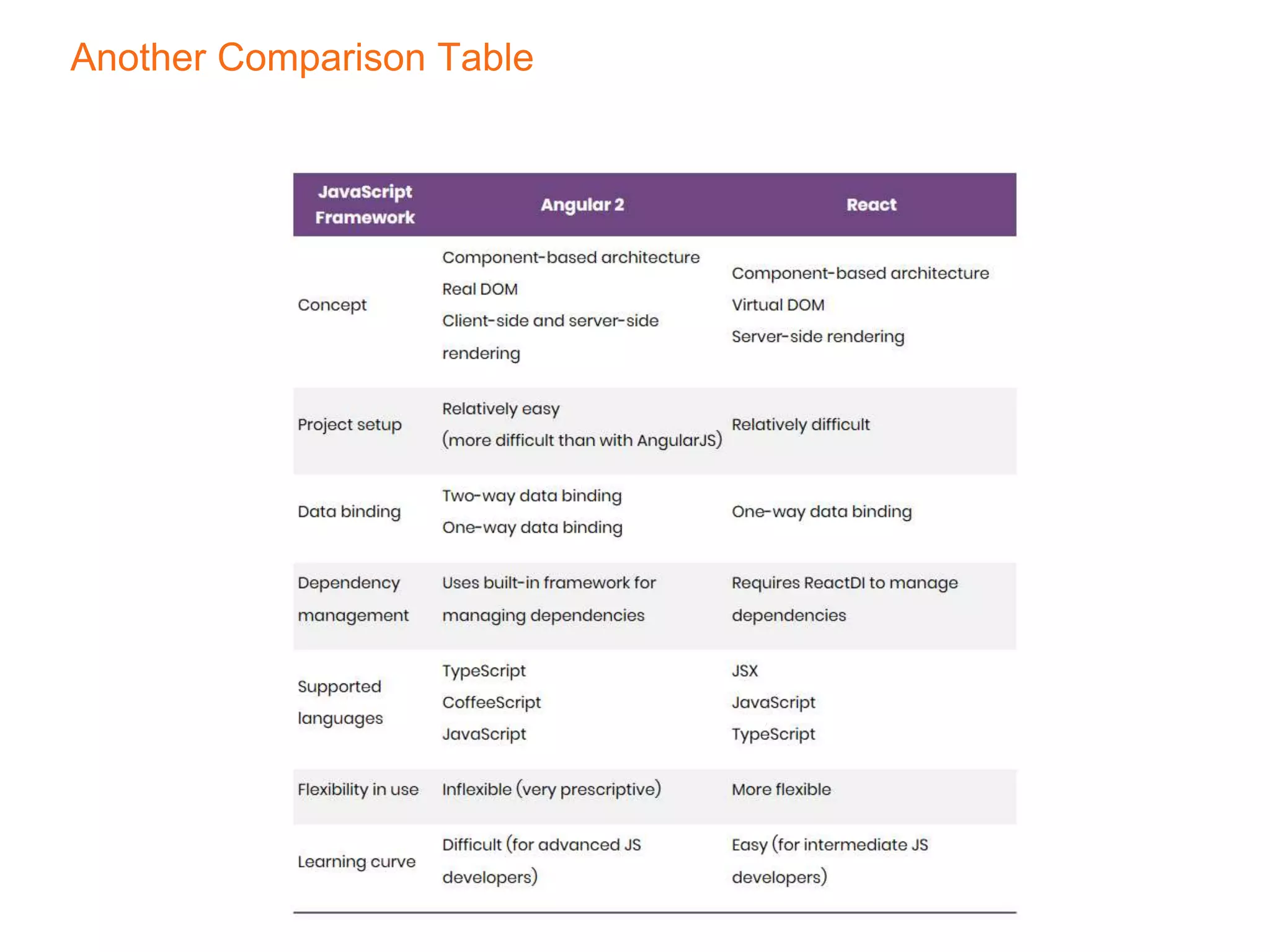This document compares React, a JavaScript library for building user interfaces, and Angular, a TypeScript-based framework for single-page applications. It discusses their architectural differences, such as React's virtual DOM and one-way data binding against Angular's digest cycle and two-way data binding. The document highlights that while Angular offers more out-of-the-box functionality, React provides a more modular and flexible approach, making it easier to debug and integrate with other libraries.
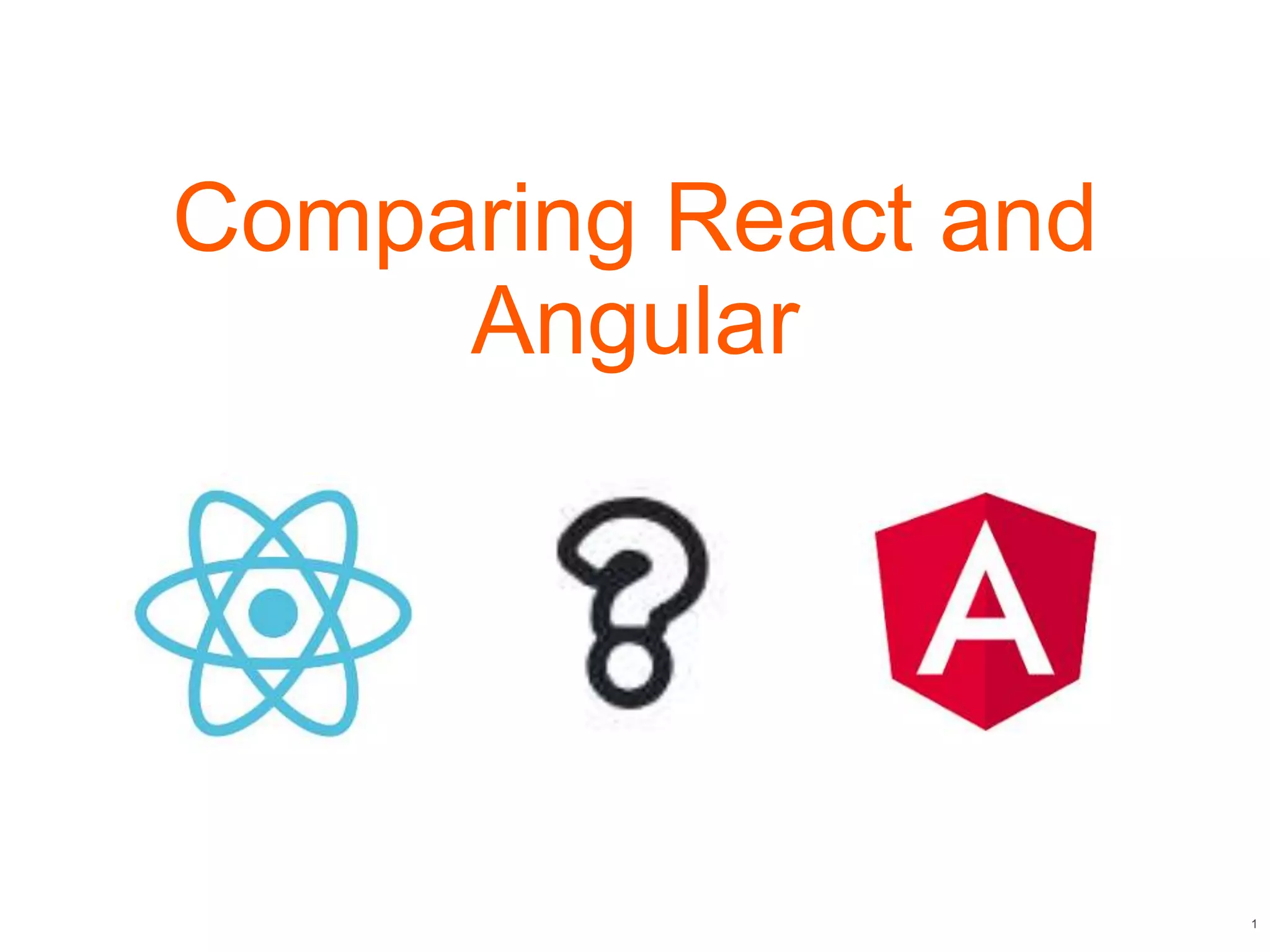


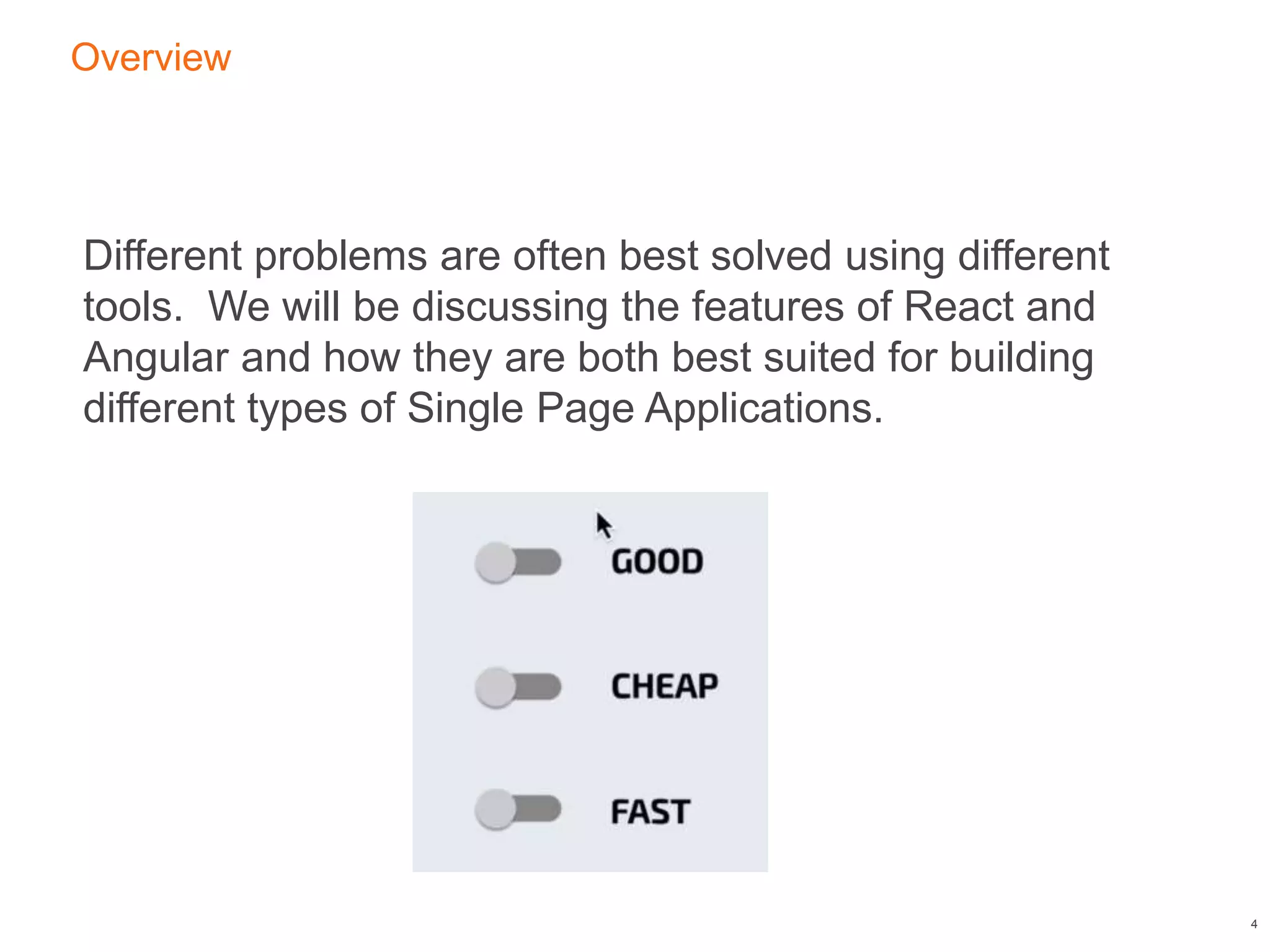

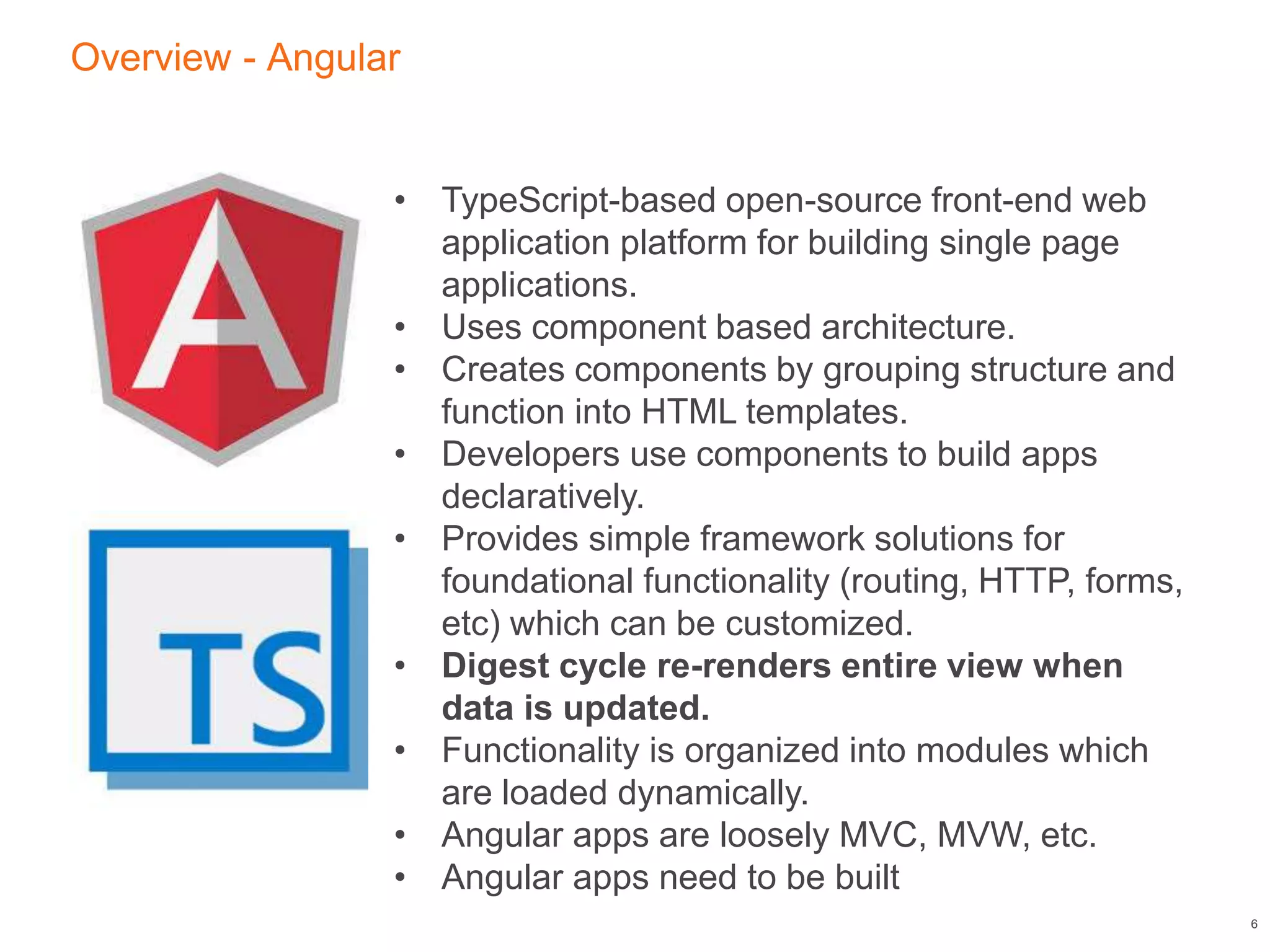



![Sample Code
<form (ngSubmit)="onSubmit(heroForm)"
#heroForm="ngForm">
<div class="form-group">
<label for="name">Name
<input class="form-control" name="name"
required [(ngModel)]="hero.name">
</label>
</div>
<button type="submit"
[disabled]="!heroForm.form.valid">Submit</b
utton>
</form>
<div [hidden]="!heroForm.form.valid">
{{submitMessage}}
</div>
10
var Saves = React.createClass({
getInitialState: function(){
…..
},
handleSubmit: function(e) {
…
},
render: function() {
var savedText = '';
var submitText = 'Save';
if (this.state.saved) {
savedText = 'You have saved this home.';
submitText = 'Remove';
}
return (
<div className="saves">
<form onSubmit={this.handleSubmit}>
<input type="submit" value={submitText} />
</form>
{this.state.numSaves} saves. {savedText}
</div>
);
}
});
JavaScript in HTML!
JS Render function
contains HTML!
Angular Template React JS Class](https://image.slidesharecdn.com/maycomparingangularandreactpublic-181227213735/75/Comparing-Angular-and-React-JS-for-SPAs-10-2048.jpg)



